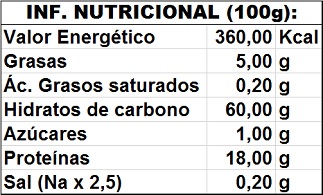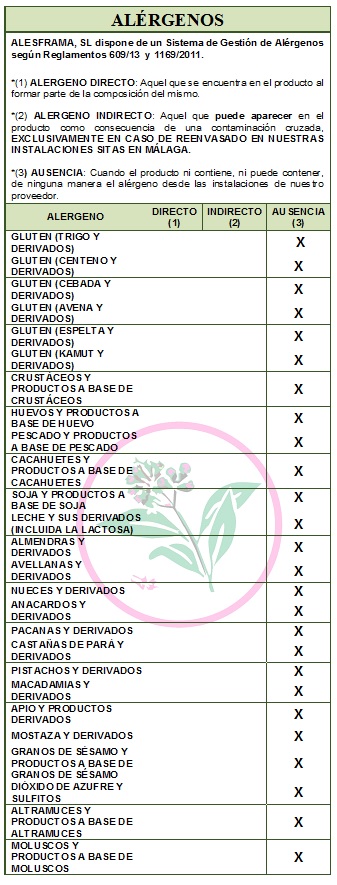My baskets
You still don't have anything in your shopping cart
My baskets
You still don't have anything in your shopping cart

{{getOldPrice()}}{{getPrice()}}
 ¡ Buying this product you get {{calculatedProductMenttos()}} menttos !
¡ Buying this product you get {{calculatedProductMenttos()}} menttos !

Without gluten

Without gluten
Blue tea, also known as oolong tea, is a traditional Chinese tea, fine, aromatic and pleasant tasting. Its degree of oxidation is between green and black which gives reason to its name, which in China is "Ging cha" (color of nature), and can be translated as green or blue.
It is considered as an effective fat burner for its ability to accelerate metabolism
INGREDIENTS
100% Oolong Tea
Use
Infuse 2 grams per cup, in water at 95ºC for 3 min.
Infuse 2 grams per cup, in water at 95ºC for 3 min
GROWING AND HARVESTING
ORGANOLEPTIC CHARACTERISTICS
Preservation
Keep in a cool, dry place, away from strong odors and sources of contamination.

DECLARATION OF ALLERGENS
According to the technical data sheet of the supplier(s):
NOT CONTAINING GLUTEN AS AN INGREDIENT
ALLERGENS:
Contains NO allergens as ingredients
As it is not a product packaged in our facilities, it is free of possible traces of allergenic elements.
COMMUNITY DIRECTIVE 2006/142/EC ON INGREDIENTS AND LABELLING OF ALLERGENS
/p>In accordance with Directive 2003/89/EC the following is a list of allergenic ingredients that must be mentioned in the labeling for the purpose of consumer protection since the presence of these substances may cause allergies.

DECLARATION OF NOT GENETICALLY MODIFIED
APPLICABLE LEGISLATION
APTITUDE FOR ETHNIC GROUPS AND OTHERS:
HALAL FITNESS : YES, official certificate not available
DIABETICS SUITABILITY : YES
FIT FOR VEGETARIANS : YES
FIT FOR VEGANISTS : YES
FIT FOR VEGANS : YES
CELIACS SUITABILITY : YES
Blue tea, also known as oolong tea, is a traditional Chinese tea, fine, aromatic and pleasant tasting. Its degree of oxidation is between green and black which gives reason to its name, which in China is "Ging cha" (color of nature), and can be translated as green or blue.
It is considered as an effective fat burner for its ability to accelerate metabolism
INGREDIENTS
100% Oolong Tea
Use
Infuse 2 grams per cup, in water at 95ºC for 3 min.
Infuse 2 grams per cup, in water at 95ºC for 3 min
GROWING AND HARVESTING
ORGANOLEPTIC CHARACTERISTICS
Preservation
Keep in a cool, dry place, away from strong odors and sources of contamination.

DECLARATION OF ALLERGENS
According to the technical data sheet of the supplier(s):
NOT CONTAINING GLUTEN AS AN INGREDIENT
ALLERGENS:
Contains NO allergens as ingredients
As it is not a product packaged in our facilities, it is free of possible traces of allergenic elements.
COMMUNITY DIRECTIVE 2006/142/EC ON INGREDIENTS AND LABELLING OF ALLERGENS
/p>In accordance with Directive 2003/89/EC the following is a list of allergenic ingredients that must be mentioned in the labeling for the purpose of consumer protection since the presence of these substances may cause allergies.

DECLARATION OF NOT GENETICALLY MODIFIED
APPLICABLE LEGISLATION
APTITUDE FOR ETHNIC GROUPS AND OTHERS:
HALAL FITNESS : YES, official certificate not available
DIABETICS SUITABILITY : YES
FIT FOR VEGETARIANS : YES
FIT FOR VEGANISTS : YES
FIT FOR VEGANS : YES
CELIACS SUITABILITY : YES
